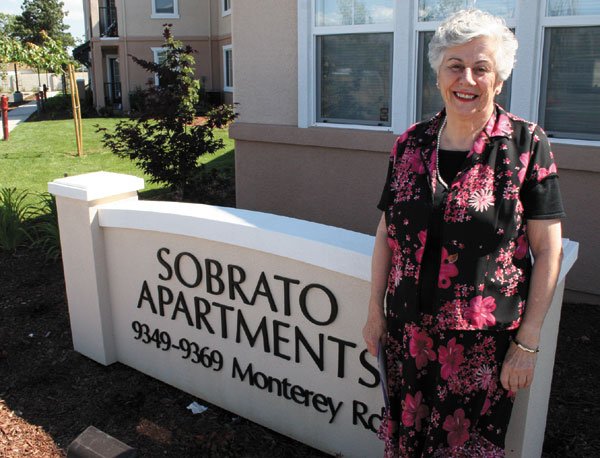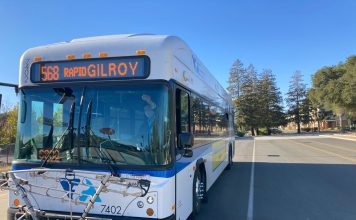New residents welcomed to apartments at the Sobrato Transitional
Housing Center
Gilroy – Monica Ross opened the door to her new apartment at the Sobrato Transitional Housing Center and cried – it was beautiful. It was empty, but it was home. For the first time in six years she and her 10-year-old son have a place to rest their bones. In their own space – not a car, not the couch in a friend’s house.
“Thank you, thank you Jesus,” she said. “This is wonderful. Wait until my baby sees this!”
Ross walked around the empty apartment taking it all in. Flipping every switch, turning the faucets on and off, opening the cabinet drawers.
It took her six years, a bus and a train ride to get here.
“I’m ready. I’m so ready for this,” she said, her eyes tearing as she signed her lease. “I’m just overwhelmed. It’s time for a change and I want that. Doors are opening for me. I know I’m going to be okay.”
The Sobrato apartments at 9369 Monterey Road is part of a $22-million collaborative project between EHC LifeBuilders and South County Housing to help homeless individuals and their families get their lives on track. There are 60 units for extremely low income families from across the county. Rates vary depending on the number of family members and total household income. They will have access to child care, and health, employment and housing services during their two-year stay.
The apartments serve as half of the Sobrato Transitional Center – which includes a 140-bed shelter facility for the homeless expected to open at the end of the year. The 25,000-square-foot complex will replace the Armory, which is only open three to four months out of the year, 12 hours a day.
More than 250 families applied for a unit in the apartment complex, which offers individual case management.
A mother and her three children were the first to arrive in the Sobrato Transitional Apartments in March. They had been living in their car until the doors opened over the weekend.
Their neighbors slowly started trickling in – all suffering from the same problem, but all having very different stories. Most of the families are women and their children, however, there are also two parent households moving in.
Rosanna Gomez was the 79th person to apply last November.
She and her 3-year-old son have been homeless for the past two years after she left her abusive husband.
“It was the best decision I ever made,” she said. “I got the baby and took whatever belongings I could. I jumped in the car and drove and drove. I didn’t even know where I was going.”
Gomez has been staying with her sister Patricia in Gilroy for the past 18 months.
“It’s kind of hard living with friends and relatives when you’ve got a 3-year-old to raise,” she said. “He wanted his own space. I felt it was a good opportunity for me and my son to get in so we wouldn’t have to depend on anyone else.”
Gomez smiled as she watched her son play tag with children on the playground at their new apartment.
“It feels great to live in a place that’s never been lived in before,” she said. “It’s stressful not knowing where you’re going to stay next.”
She is currently looking for a job and said she will take whatever job she can get.
“God has really blessed me,” she said. “I’m going to do what I need to do to get back on track. I just want to be independent. I don’t want to ever have to go back to that place I was before.”
For South County Housing board member Maria Skoczylas, opening the transitional center is a dream come true.
She has volunteered at the Armory shelter for the past 19 years and has pushed for a year-round shelter for the past decade.
Skoczylas and South County Housing workers had to sell the project to the community because there were concerns about property values dropping and fears of child molesters moving to the neighborhood.
“We had a really difficult time. We had to have neighborhood meetings. People would come out of the woodwork. And they spoke so many untruths,” she said. “Sometimes there’s the misconception out there that people are homeless and they don’t want to be helped. I think they just need to feel good about themselves.”
Helping the homeless has turned into a lifelong passion and purpose for Skoczylas, and she believes the apartments and shelter will help individuals turn their lives around.
“I think the most important thing is that somebody else cares about them and will help them,” she said. “You can find cases in there of people, just like you and me. We could be there.”















